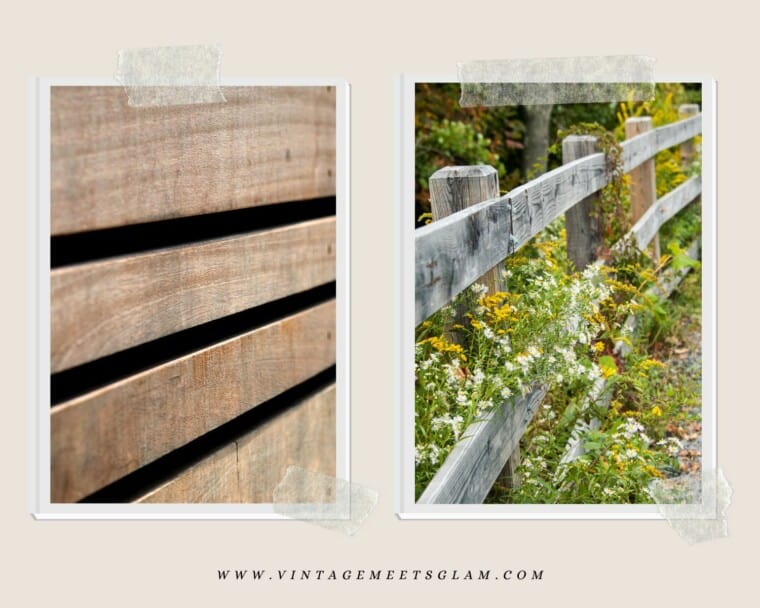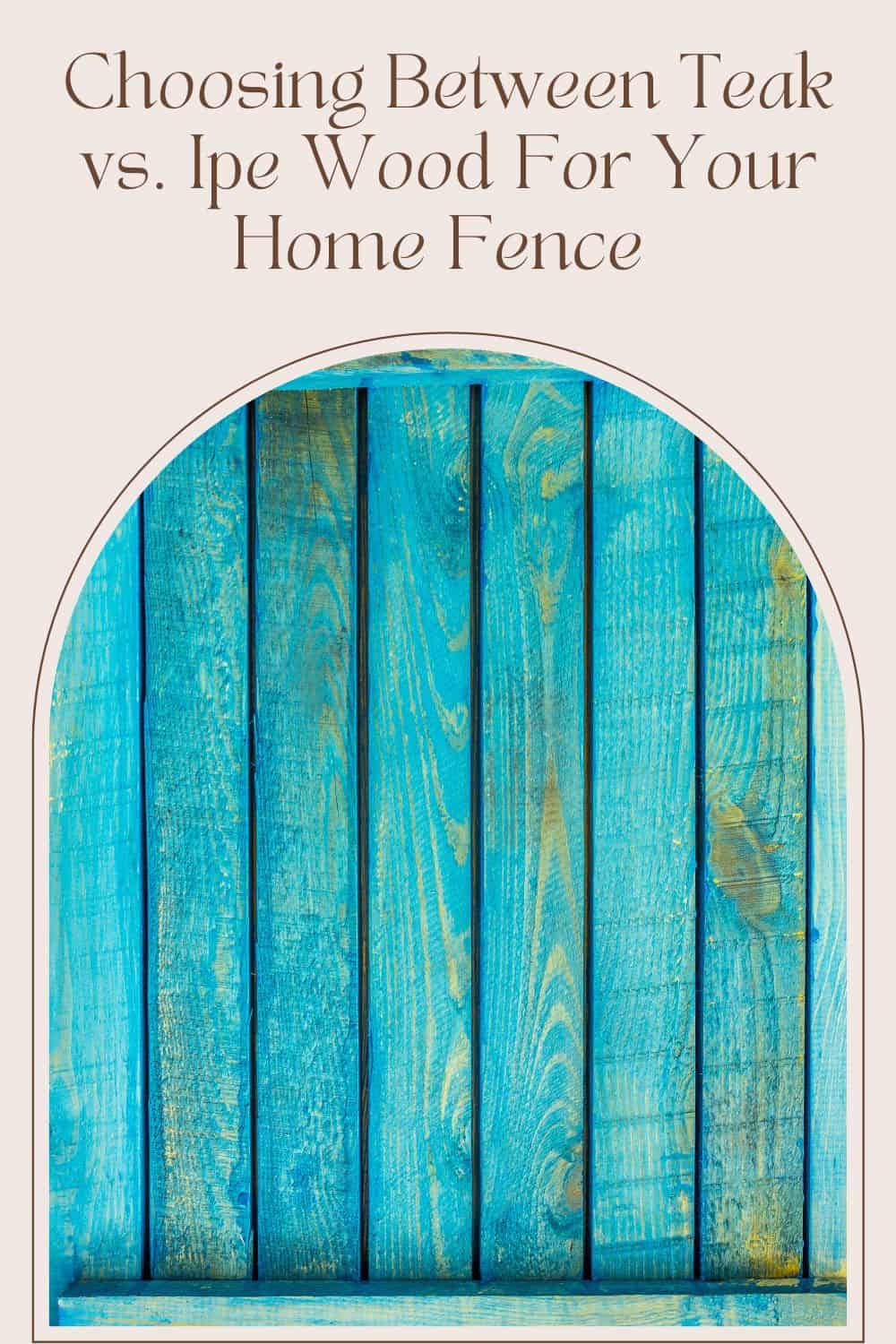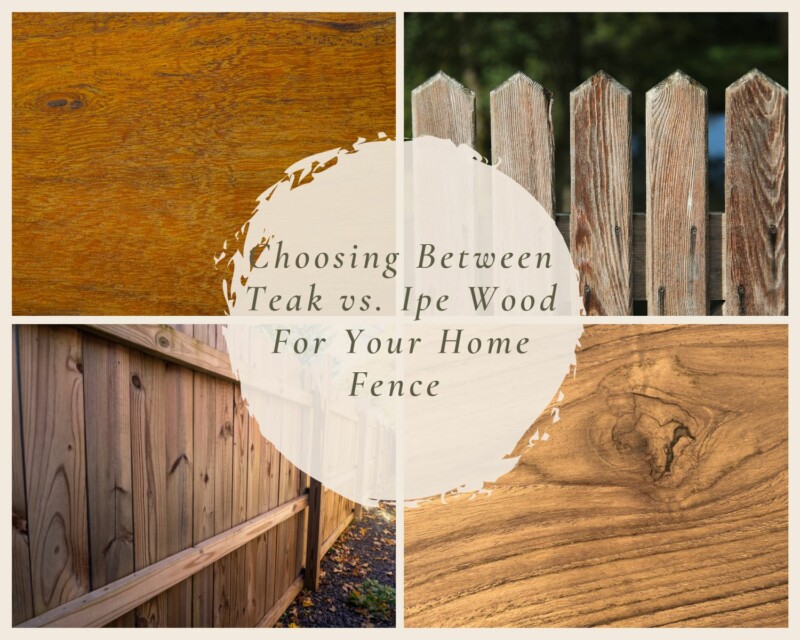Teak and ipe are two of the most popular woods for decking. Ipe wood comes from the legume or rubber tree and is used in furniture, cabinets, and furnishings. It has different characteristics than teak, but both hardwoods have similar characteristics.
Teak wood is a hardwood that is used in boat building. However, they are not the same thing. In this article, we’ll discuss teak vs. ipe and the benefits of each type of wood for decks, patios, and outdoor spaces.
The Differences Between Teak and Ipe
While teak and ipe are hardwoods, there are some differences between them.
Appearance
Ipe wood is a dark brown, while teak has a lighter color and a more pronounced grain pattern. The grain of the wood is what determines the characteristics of the wood itself. The larger the pores in each layer, the smoother and more uniform they become over time. In general, ipe has larger pores than teak, which makes it more resistant to weathering and stains but also easier to stain or paint than teak species
Durability
Both are popular choices for outdoor furniture and decking, but experts agree that ipe wood outperforms teak in terms of longevity. It has a rating of 1 on the Janka Hardness Scale, making it one of the hardest and most durable woods on the market. In comparison, teak has a slightly lower rating at 2. Additionally, ipe wood shows excellent resistance to mold and insects, while teak may require regular treatment to protect against these issues. With proper maintenance, an ipe wood deck or piece of furniture can last upwards of 25 years or longer – far surpassing the lifespan of teak. Overall, when it comes to durability, ipe wood is the clear winner.
Maintenance
Teak is known for its natural resistance to moisture and rotting, making it highly durable in an outdoor setting. However, this type of wood does require regular maintenance in order to keep its golden brown hue, as it tends to fade over time without treatment. On the other hand, ipe wood is dense and resistant to pests and decay, requiring little maintenance beyond occasional cleaning. While it may not have the same aesthetic appeal as teak, it can hold up well without regular upkeep. Ultimately, the choice between teak and ipe ultimately depends on the level of maintenance desired for your outdoor space.
Workability and Uses
The hardness of the wood determines how easily it can be worked and shaped. Teak has a coarse grain, which makes it harder to work with than ipe. Ipe is easier to work with because it has an even, fine-grained texture that makes it easier to cut and carve into shapes.
Ipe also holds up better under stress than teak does. It doesn’t crumble or split easily when used for outdoor projects like decking or pergola construction.
Sustainability
As you can see, teak and ipe are both sustainable hardwoods. They’re harvested from the rainforest without damaging any ecosystems or harming any animals. While this may seem like a slight distinction at first glance, it’s quite important when deciding which type of wood to choose for your home. Both teak and ipe have been shown to affect the environment and humans positively.

Price
Teak is more expensive than Ipe. This is because it’s harder to grow, harvest, and process than ipe wood. Ipe trees are grown in plantations with a lot of room for error. There is less risk of damage or disease when you have hundreds of acres growing alongside each other instead of just a few scattered around the world.
The price difference between teak and ipe comes down to quality. If you want solid craft on your decking boards, go with teak.
Water Resistance
Ipe is more resistant to rot and decay than teak. It’s also better at resisting insects, fungi, and other types of damage that can occur when trees are grown outdoors in tropical climates.
Teak is more susceptible to decay because it doesn’t have the natural oils that protect Ipe trees against rot and decay.
Ethics of Logging
Teak and Ipe are both hardwoods. Hardwood trees grow slowly, so they can take longer to mature than softwoods. This means it takes a long time for teak to reach its full potential as a wood.
When you buy teak furniture, you know exactly what you’re getting. But if you’re purchasing an Ipe tabletop or chair seat, things become less clear-cut.
Why Is Teak So Expensive?
Teak is a tropical hardwood, meaning it’s found in areas with warm climates. The high demand for this wood and its low supply means that teak is expensive to purchase and even more so to ship. If you want your home to look like an oceanfront resort, you can expect your investment in teak furniture to be worth every penny.
Teak is used in many applications for decks, swimming pools, boats, and yachts. The durability of this material makes it ideal for use outdoors or indoors because it won’t need replacing as often as other woods.
Benefits of Teak
If you’re looking for a durable and beautiful wood resistant to rot, decay, and insects, teak is a perfect choice. Teak has an oily texture that makes it easy to work with. This makes it great for outdoor furniture or decks because it will last for decades if properly cared for.
Teak also resists moisture better than other types of wood, such as Ipe. This makes it ideal for using your deck or outdoor furniture in wet environments.
Benefits of Ipe
If you are looking for tropical-style wood flooring, Ipe is one of the most popular options. It’s not only beautiful, but it also has a lot of pros when it comes to durability and life expectancy.
Ipe is a hardwood that brings a natural look and feels to any room. It looks like wood but is made from several different trees worldwide. The best part about this type of wood is that it doesn’t require any special care or maintenance, so you can enjoy its beauty for years without worrying about taking care of it.
The only thing you need to do with Ipe is clean it after you’ve finished using it and keep it away from water or other liquids so that the natural oils don’t seep out over time.
Conclusion
Teak is one of the most durable woods in existence, and it’s also trendy. It works well for decks, furniture, and boat building. Ipe is an excellent alternative to teak if you want something that doesn’t have such a high price tag. Both species are good choices when you want something that will last forever, but they have some differences. Teak has more natural oils than ipe, which makes it easier to work with but also more susceptible to stains and cracking over time.




